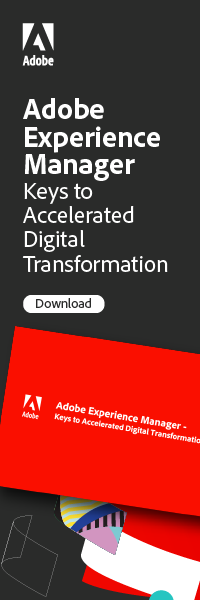
Image by jannoon028 on Freepik
The Comprehensive Guide to Image Optimization in On-Page SEO
Table of Contents:
- Introduction.
- Image Compression.
- Image Attributes.
- Types of images to be used in website.
- Sourcing Copyright-Free Images:
- Conclusion.
- FAQs for “The Comprehensive Guide to Image Optimization in On-Page SEO”.
Introduction to Image Optimization:
In the world of Search Engine Optimization (SEO), how a website looks and is set up is really important for how often it shows up when people search online. Image optimization is a big part of making a website better for search engines, even though many people might not think about it much. This article will talk about important things for image optimization, like making images smaller without losing quality, giving images good descriptions, using the right kinds of images, and finding pictures that can be used without worrying about copyright.
Image Compression:
One of the primary considerations in image optimization is file size. Large image files can slow down website loading times, leading to a poor user experience and negatively impacting SEO. To address this, image compression is essential. It involves reducing the file size of images without compromising their quality. There are various tools available, both online and offline, that can help compress images effectively. Popular online tools include TinyPNG, Compressor.io, and ImageOptim for Mac users.
Image Attributes:
In on-page SEO, providing relevant and descriptive information about your images is crucial for search engines to understand their content. Here are key image attributes to focus on:
a. Alt Text (Alternative Text): Alt text is a concise description of an image that appears when the image cannot be loaded. It serves as a crucial element for accessibility and allows search engines to understand the image’s content. Include relevant keywords in the alt text, but ensure it accurately describes the image. Let’s create a good and bad example of alt text for an image featuring a beautiful beach sunset:
Good Alt Text:
alt=”Vibrant beach sunset with colorful sky and calm waves”
Bad Alt Text:
alt=”IMG789012.jpg”
b. File Names: Before uploading an image, rename the file using a descriptive and keyword-rich filename. This practice not only aids search engines in understanding the content but also contributes to overall SEO.
Good File Name: colorful-sunset-mountain-landscape.jpg
Bad File Name: IMG01012024.jpg
c. Title Attribute: While not as critical as alt text, adding a title attribute to your images can provide additional context. This attribute is displayed as a tooltip when a user hovers over the image.
title=”beautiful-colorful-sunset-mountain-landscape”
d. Caption Tags: While not as crucial as alt text, adding captions can provide additional context. Some content management systems (CMS) allow users to add captions to images easily.
e. Schema Markup: Explore the use of schema markup for images. This can help search engines understand the image content better and may result in enhanced rich snippets in search results.
Types of images to be used in website:
Choosing the right types of images is vital for effective on-page SEO. Consider the following tips:
a. Relevance to your topic: Use images that are directly related to the content on the page. Relevant images enhance the user experience and help search engines understand the context of the page.
b. High Quality: While compressing images to reduce file size, ensure that the quality remains high. Blurry or pixelated images can negatively impact user perception and SEO.
c. Responsive Images: With the increasing use of mobile devices, it’s crucial to use responsive images that adapt to different screen sizes. This improves the overall mobile-friendliness of your website, a factor considered by search engines in rankings.
Sourcing Copyright-Free Images:
Using images without proper licensing or permission can lead to legal issues. To avoid this, consider the following sources for copyright-free images:
a. Stock Photo Websites: Platforms like Unsplash, Pexels, and Pixabay offer high-quality images that are free to use without attribution.
b. Creative Commons: Websites like Flickr and Wikimedia Commons host images under Creative Commons licenses, allowing users to use them for free with certain restrictions.
c. Public Domain: Images in the public domain are not protected by copyright and can be freely used for any purpose. Websites like Public Domain Pictures and NASA’s Image and Video Library provide such content.
Conclusion:
In conclusion, image optimization is a critical component of on-page SEO that should not be overlooked. By compressing images, providing relevant attributes, using the right types of images, and sourcing copyright-free content, you can enhance your website’s performance, improve user experience, and boost search engine rankings. Incorporating these image optimization practices into your SEO strategy will contribute to a more robust and competitive online presence.
FAQs for “The Comprehensive Guide to Image Optimization in On-Page SEO”
Q1. Why is image optimization important for SEO?
Image optimization plays a crucial role in on-page SEO by improving website loading times, enhancing user experience, and allowing search engines to understand and index the content.
Q2. What is image compression, and why is it necessary?
Image compression involves reducing the file size of images without compromising quality. It is essential to prevent slow website loading times, ensuring a positive user experience and maintaining good SEO practices.
Q3. Which tools can be used for image compression?
Popular online tools for image compression include TinyPNG, Compressor.io, and ImageOptim for Mac users. These tools help reduce file sizes effectively.
Q4. What are the key attributes for image optimization in on-page SEO?
Important image attributes include Alt Text (Alternative Text), descriptive File Names, Title Attributes, Caption Tags, and the use of Schema Markup to provide additional context for search engines.
Q5. How can Alt Text be optimized for better SEO?
Alt Text should be a concise, descriptive summary of the image content. It should include relevant keywords while accurately representing the image. Avoid using generic filenames like “IMG789012.jpg.”
Q6. Why is it essential to use responsive images in on-page SEO?
Responsive images adapt to different screen sizes, improving the mobile-friendliness of a website. As mobile usage continues to rise, search engines consider mobile-friendliness as a ranking factor.
Q7. What types of images are recommended for website use?
Choose images that are relevant to your content, of high quality, and responsive to different screen sizes. Ensuring relevance and quality contributes to a positive user experience and supports SEO efforts.
Q8. Where can I find copyright-free images for my website?
Consider using stock photo websites like Unsplash, Pexels, and Pixabay for high-quality, free-to-use images. Additionally, platforms like Flickr and Wikimedia Commons host images under Creative Commons licenses, while some websites offer content in the public domain.
Q9. How can image optimization contribute to a competitive online presence?
Image optimization enhances website performance, improves the user experience, and positively influences search engine rankings. By implementing these practices, you can establish a stronger and more competitive online presence.
Q10. What are the potential consequences of using images without proper licensing or permission?
Using images without proper licensing or permission can lead to legal issues. It is crucial to source images from reputable platforms that offer copyright-free content to avoid legal complications.













1 Comment